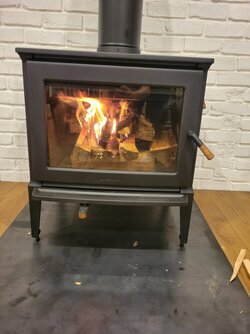I had an old fisher grandma bear, and baker double eagle in the past, been using geothermal the past few years however I would like to put a woodstove in. I have various reasons for this, but I am planning on using this for everyday heat. Chimney is already in place.
The federal tax credits have my eye, however there are so many options now my head is spinning. Efficiency numbers, secondary burn, catalyst, hybrid, cast iron, steel, soapstone, etc...
I have the basics down of what does what, what I need help with is what is best. My home is rancher around 2,200 sq ft. Well insulated. What should I look for? I don't mind a little maintenance, if it means increased efficiency. How about burn times? Seems to be huge discrepancies between manufacturers. You have to sacrifice something for those longer burn times right?
My main wood source is oak and some hickory. Price isn't a huge deal, I could be sold on a $3500 stove if the reasons were good, I'd like to keep it under $2k though.
Also I'd have to get a good measurement, but I think my chimney height (from flue entrance to cap) is around 15'
The federal tax credits have my eye, however there are so many options now my head is spinning. Efficiency numbers, secondary burn, catalyst, hybrid, cast iron, steel, soapstone, etc...
I have the basics down of what does what, what I need help with is what is best. My home is rancher around 2,200 sq ft. Well insulated. What should I look for? I don't mind a little maintenance, if it means increased efficiency. How about burn times? Seems to be huge discrepancies between manufacturers. You have to sacrifice something for those longer burn times right?
My main wood source is oak and some hickory. Price isn't a huge deal, I could be sold on a $3500 stove if the reasons were good, I'd like to keep it under $2k though.
Also I'd have to get a good measurement, but I think my chimney height (from flue entrance to cap) is around 15'
Last edited:


